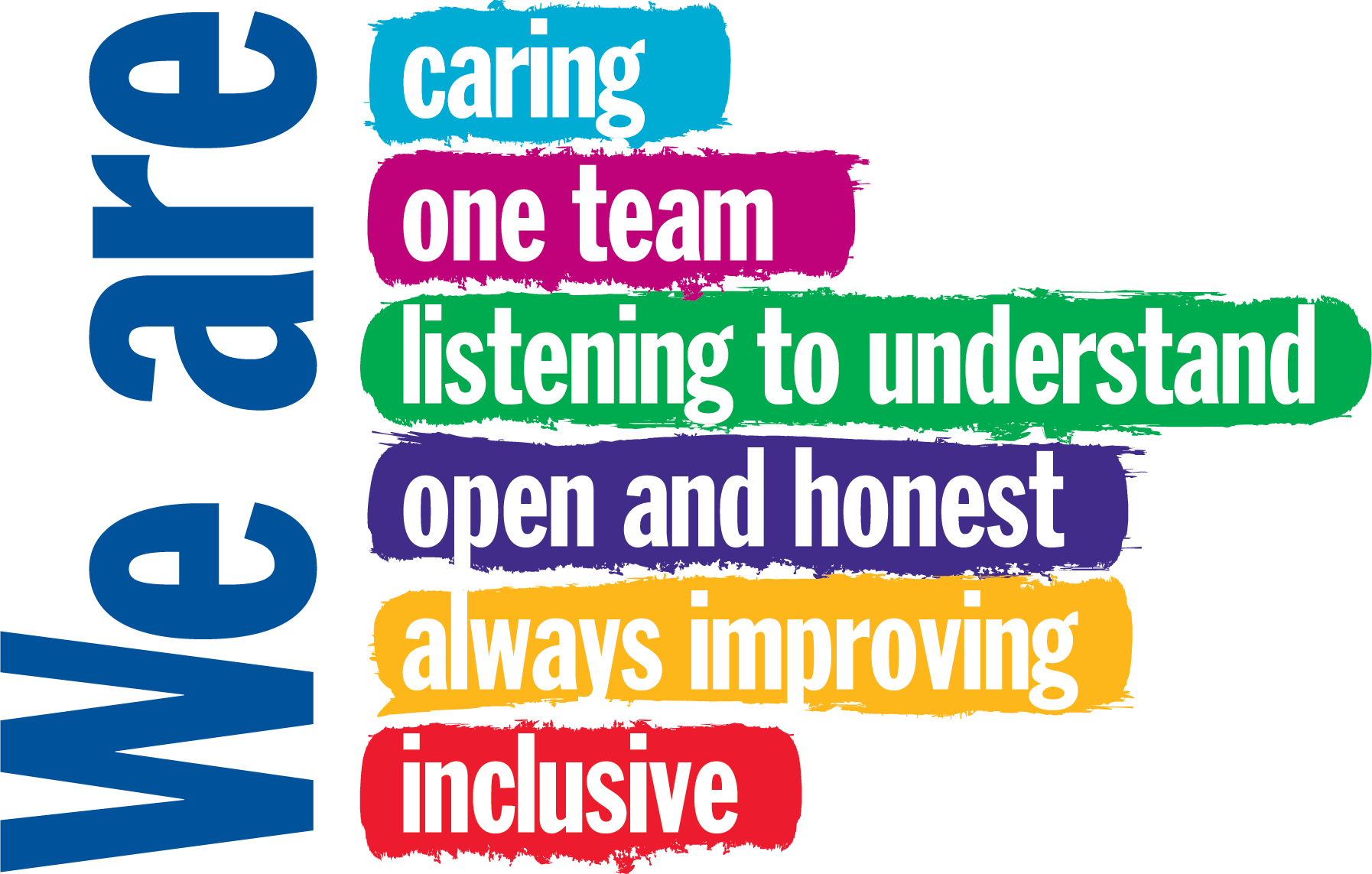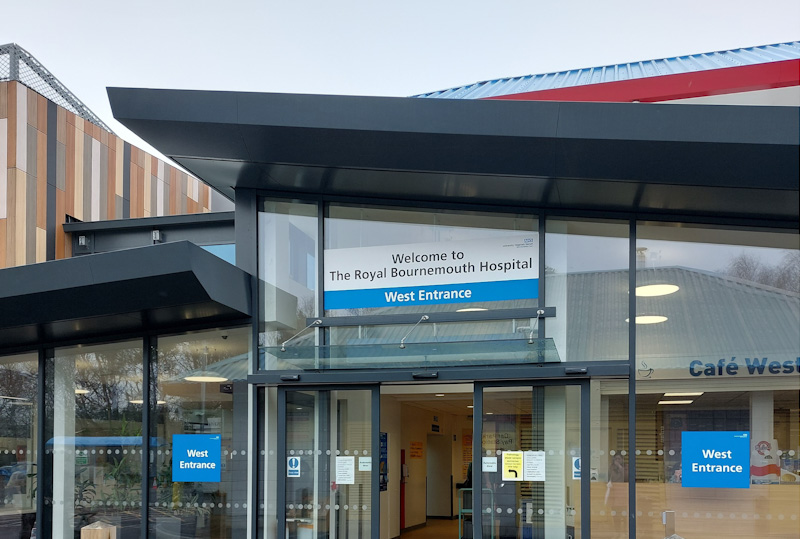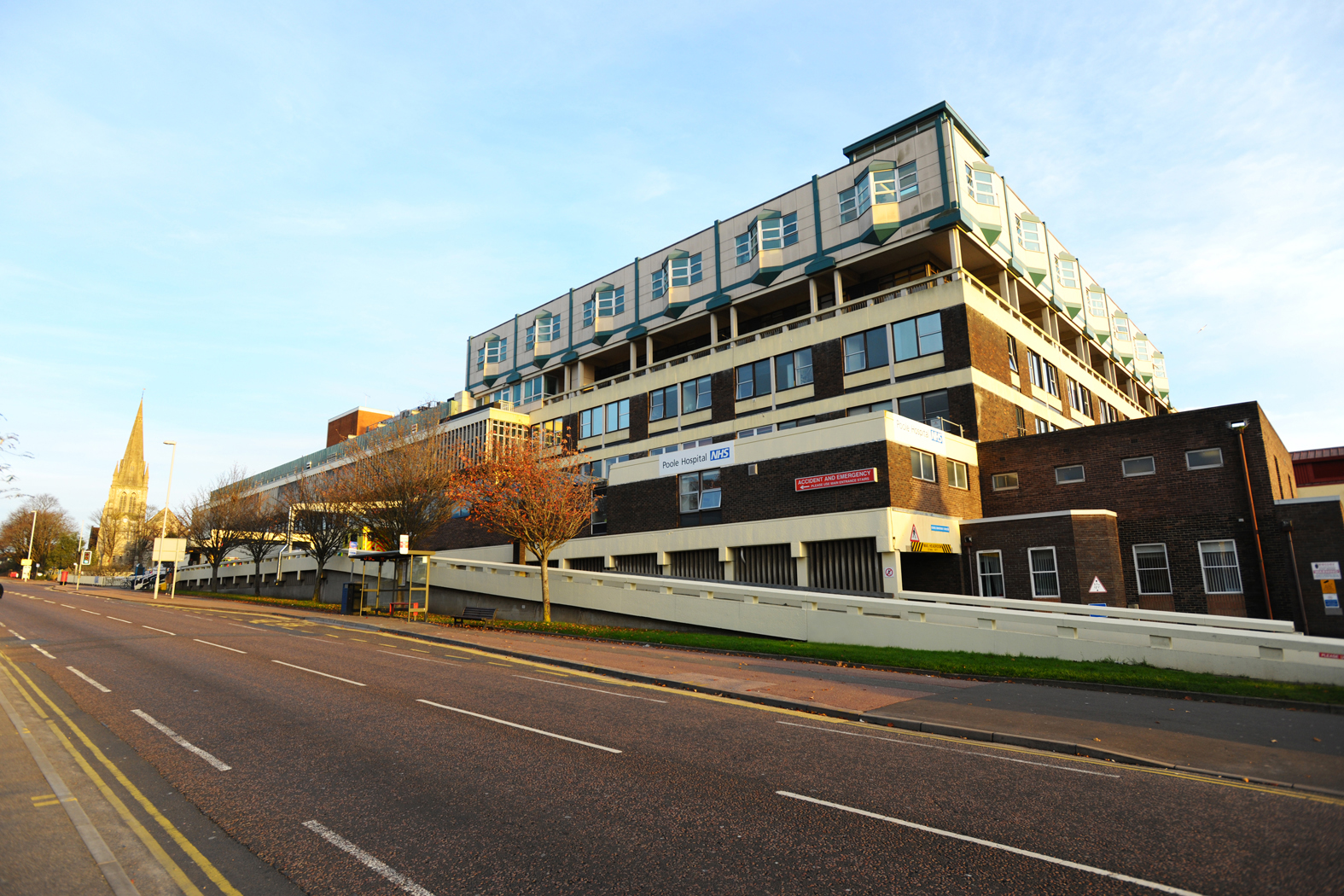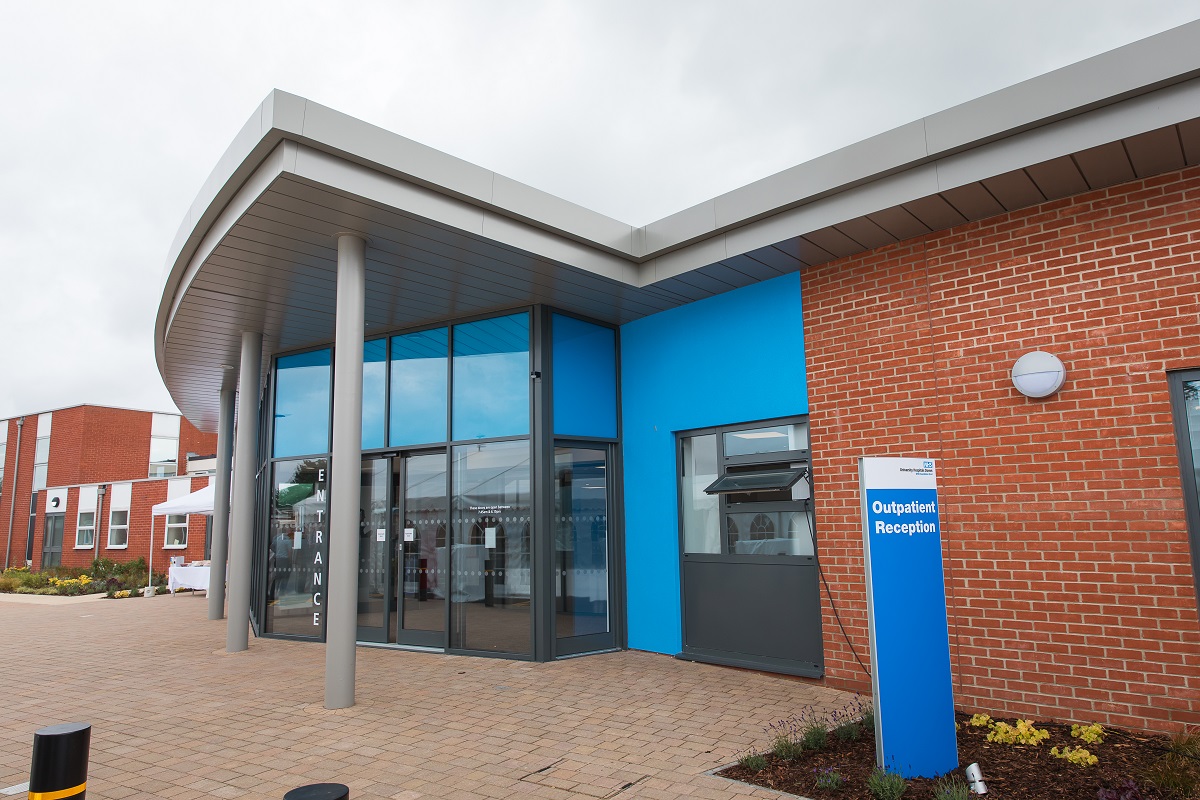Physiotherapy and occupational therapy
Physiotherapy and occupational therapy
The orthopaedic therapy team consists of physiotherapists, occupational therapists, and therapy assistants, who will help patients with their recovery following orthopaedic surgery,
Physiotherapists will give advice and teach exercises to help your joint recover from surgery and they can refer for outpatient physiotherapy appointments when needed, to help guide your recovery and return to activity. They will also assess and support patients with their walking after surgery to the leg or foot. They often provide walking aids to help with this, such as crutches or a walking frame.
Occupational therapists will look at how you will manage day-to-day tasks after surgery. Activities such as washing, dressing, and cooking may be difficult in the recovery period after your surgery, so they may provide equipment or suggest a different way of doing a task to allow you to remain independent.
Walking after your orthopaedic surgery
If you have an operation to your leg or foot, the physiotherapists will review you after your surgery. They will let you know how much weight you will be able to take through your operated leg and will ensure you can walk safely. In most cases you will need to use a Zimmer frame or elbow crutches after surgery. The physiotherapists will provide you with these and show you how to use them. You will have chance to practise with them on the ward before going home.
This video will show you how to walk with crutches if you are allowed to take weight through your leg.
The physiotherapists can also show you how to go up and down a step or a flight of stairs before you go home. This video will also show you how to do this.
Weight bearing status
After your operation the surgeon will specify how much weight they wish you to put on your operated leg. These instructions must be strictly followed to make sure your surgery does not fail. Your physiotherapist will advise you of your weight bearing status after surgery, following consultation with your surgeon. Your physiotherapist will also practice moving around with you, so that you know you will manage at home. The different weight bearing statuses are outlined below.
Non weight bearing:
You must not put any weight through the operated leg. This includes when standing up and sitting down, as well as walking. We have a specific information leaflet for this. An occupational therapist will visit you on the ward to discuss managing at home.
Touch weight bearing:
When standing or walking, the foot can touch the floor, but you should not put any weight through it. You will need to use a walking frame or elbow crutches every time you walk.
Partial weight bearing:
You can take some weight through your operated leg but not all your weight. This can be up to 50% of your weight but no more. The rest of the weight goes through your arms onto crutches or a walking frame. You will need to use a walking frame or two crutches every time you walk.
Heel weight bearing:
Weight can be put through the heel of your operated foot, but you should not put weight through the front of your foot or toes. Crutches or walking sticks can be used to help you with your balance.
Full weight bearing:
You can put as much weight as you feel comfortable with through your leg and foot. Initially you may need a walking aid for comfort and balance, but you can reduce and stop using these when you feel able.
Patient leaflets
Patient videos
There are several short videos produced by the orthopaedic therapy team. You may wish to watch these before surgery to familiarise yourself with how to do things after surgery.
Total knee replacement
Unicompartmental knee replacement
Total hip replacement
Knee arthroscopy
Shoulder surgery
Attending outpatient appointments after your surgery.
After most orthopaedic surgeries you will be unable to drive for a short period. Please consider who will be able to take you to appointments while you cannot drive. You may need to attend your GP practice or the orthopaedic department to have your wound reviewed/stitches removed at about two weeks following surgery. You may need to attend outpatient physiotherapy from one to two weeks following surgery. Where possible this will be arranged at your closest hospital providing outpatient physiotherapy. There may be several appointments. You may also need to return to the orthopaedic outpatient department at six weeks for a review with your surgeon's team to check on your recovery.
Please speak to friends and family members to help you to get to these appointments. Alternatively, many areas have a local neighbour car scheme, or some taxi firms provide a discount to hospital appointments. You may be unable to get a bus initially, until you can walk a good distance outside.
Hip surgery class available to NHS and private patients
For anyone at least 3 weeks post hip surgery that uses 1 or 2 crutches to walk or can walk unaided (It is not suitable if you are needing to use a walking frame). This exercise class is held weekly at Christchurch Hospital on a Tuesday afternoon. You can attend as few or as many sessions as you would like provided there is space available. The costs to attend a hip exercise class is £7 a session. This money will specifically be reinvested back into NHS physiotherapy to support equipment and training. For more information please contact This email address is being protected from spambots. You need JavaScript enabled to view it. or call 0300 019 4992.
Returning equipment
If you have been loaned any therapy equipment listed below, please return it when you no longer need it.
-
Zimmer frames
-
Elbow crutches
-
Toilet frames and seats
-
Kitchen trolleys
-
Perching stools
-
Bed levers
-
Adjustable walking sticks
-
Chairs
How to return your equipment:
Dorset patients
If you, or someone you know can return your equipment, it may be taken to any of the locations below:
-
Royal Bournemouth Hospital, returned therapy equipment store next to ED minors
-
Christchurch Hospital returned therapy equipment store near the north entrance
-
NRS Wallisdown Service Centre, 498 Wallisdown Rd, BH11 8PT.
For bulky items, or if you are unable to return your equipment to the above locations, please call NRS Healthcare on 0344 893 6364 or email This email address is being protected from spambots. You need JavaScript enabled to view it.
Hampshire patients
Please telephone Hampshire equipment services on 01256 476800 and select option 1 to arrange return of your equipment
We appreciate your help. Returning equipment helps the NHS to save money and provide equipment to those that need it.
Contact details
If you would like to contact a physiotherapist or occupational therapist from the elective orthopaedic therapy team you can email them at This email address is being protected from spambots. You need JavaScript enabled to view it.. Please note this email address is for patients who are having or have recently had planned orthopaedic surgery at Royal Bournemouth Hospital only. We are unable to reply to patients who have queries for other teams or departments. Please send us a short message with your question and contact details. This email will be checked daily Monday to Friday and one of the therapists will email or call you back.
If you are unable to email us please telephone the therapy team on 0300 019 6221
Trauma and Orthopaedic Services at Poole Hospital
The trauma orthopaedic team includes:
Clinical director: Responsible for clinical leadership and clinical service development. The clinical director leads a team of trauma orthopaedic consultant surgeons, middle grade doctors and junior doctors to provide 24-hour medical care.
Directorate manager: Responsible for the management of the service, working closely with the clinical director and matron to achieve a high standard of patient care.
Matron: Responsible for professional nursing leadership and service development on the inpatient trauma wards.
Trauma Assessment and Co-ordination Team (TACT): A team of experienced nurse practitioners and clinical nurse specialists responsible for the co-ordination of the patient pathway to surgery.
Senior clinical nurse for trauma and education: Service development, co-ordination of care for patients admitted with spinal injuries and provision of expert nursing care.
Therapy team leader: Responsible for leading and co-ordinating inpatient rehabilitation by the trauma therapies team, including physiotherapists and occupational therapists.
Patients may be asked to attend one of many weekly fracture clinics as a result of a visit to Poole Hospital or the Royal Bournemouth Hospital Emergency Department, following a referral by their GP or following discharge after inpatient/day case surgery or treatment. Patients may be seen by the consultant or by a member of their team of doctors and physiotherapists.
During their visit patients may have to have an x-ray and/or be treated in the plaster room by one of our experienced technicians.
The ten trauma orthopaedic consultant surgeons providing the service at Poole Hospital are also part of the orthopaedic team at the Royal Bournemouth Hospital. They hold elective outpatient clinics here for patients requiring planned surgery, for example, a hip or knee replacement.
Patients may be referred by their GP for a consultation at Poole Hospital but their subsequent operation will be undertaken at Royal Bournemouth Hospital.
GP’s may refer children to our paediatric orthopaedic elective service. The service is led by a consultant surgeon who is part of the Southampton University Hospitals Trust paediatric orthopaedic team.
The consultant holds outpatient clinics in Poole Hospital on a weekly basis and regularly visits Langside School and Victoria Education Centre & Sports College.
Children who require surgery will be admitted as a day case patient or as an inpatient on the children’s unit at Poole. Some children may be referred for treatment or surgery at Southampton.
The Virtual Fracture Clinic is now running in Poole Hospital! We will keep you updated with progress via this page.
For more information on these changes, and what this may mean for you, please see below.
What is the Virtual Fracture Clinic?
Our fracture clinics have been redesigned to offer patients a safe and effective process in assessing their injury.
Until recently, all fractures/breaks were seen in our Fracture Clinic a few days after the injury. Patients with straightforward and predictable breaks waited in our busy fracture clinic, often taking time off work/school, without any subsequent change in their treatment. However, occasionally the injury is more significant and requires further examination and possible surgery. It is therefore useful for all patients’ x-rays and notes to be reviewed by a Consultant.
Coming to a traditional fracture clinic in the first few days is unnecessary in many cases and often difficult due to pain and immobility. It can be apparent at the time of the first fracture clinic appointment that an early opinion of a specialist is required. This can now be provided by at our Virtual Fracture Clinic.
Now to ensure patients are accurately diagnosed and treated in the appropriate clinic, patients are first referred to our Virtual Fracture Clinic. Each referral is reviewed by one of our consultants to determine the appropriate management and clinic for the patient to attend. This ensures that patients are not delayed in clinic and do not have to be re-referred to other departments or consultants, which can hold up their treatment and hinder recovery.
Assessment in the Virtual Fracture Clinic
After being referred to the Virtual Fracture Clinic, your case will be reviewed remotely by the Orthopaedic team within 24-72 hours of your attendance at the Emergency Department(Prior to leaving the emergency department, please make sure the hospital has an up to date telephone number and email address for you).
You will not need to attend hospital for the virtual assessment to take place.
Following the assessment, a trained, experienced physiotherapist will contact you by telephone to discuss your individual management plan. Following the phone call, you may be discharged by phone or if you require further specialist help you will be referred to the most appropriate clinic to meet your needs.
Please ensure your treating clinician has your up-to-date telephone number and email address, and that you are able to receive a call between 8.30am – 4.30pm Monday-Friday (If you are not available on the telephone, a message will be left if you have this facility)
All patients and their GP’s will receive a letter outlining the assessment and the outcome.
What happens next?
Patient aftercare is dependent on the nature of the injury. Some patients will be suitable to be managed in the community setting with support from their GP or local services. Some will require hospital visits and some will be discharged after a telephone consultation with the virtual fracture clinic team and provision of basic self-management advice.
More information on specific aftercare advice can be found in the patient advice sheets on the right hand side of this page.
Please refer to the Virtual Fracture Clinic patient leaflet for a printable version of this information
Plasters and casts
Plaster casts may not be fully dry for 48 hours, whereas synthetic casts are dry within 30 minutes. Below we have outlined some helpful information for taking care of your cast.
Do:
-
elevate the affected limb as much as possible to prevent swelling
-
exercise all joints not in a plaster/cast to prevent them stiffening
-
keep the cast clean and dry
Do not:
-
wet, heat, cut, or remove the plaster/cast
-
insert anything under the cast
-
walk on the cast unless you have been advised to do so
-
lean the cast on any hard or sharp object before it has fully dried, to avoid dents and possible complications from pressure areas
Check your plaster regularly and if any of the following problems occur, contact the orthopaedic casting team on 0300 019 4442, 8.30am-5.30pm, Monday to Friday.
Out of hours please contact the orthopaedic bleep holder by calling 01202 303626 and asking switchboard for bleep 2150
-
If your fingers or toe become swollen blue or white
-
If your fingers or toes become numb or difficult to move
-
If you experience unexpected pain in the affected area
-
If there is any discharge or a burning sensation under the cast
-
If the cast becomes uncomfortable, cracked, loose, or starts to rub
-
If there is any unpleasant smell under the cast
Frequently Asked Questions
What is the Dorset MSK triage service?
The Dorset Musculoskeletal (MSK) service has been developed by doctors and experienced physiotherapists alongside Orthopaedic surgeons, to provide an early assessment for patients with musculo-skeletal problems. This service has been commissioned by Dorset CCG following guidance from NHS England.
The team of orthopaedic specialists provide an early, expert assessment and are usually able to diagnose and treat your problem.
You will have been referred by your GP for an in-depth assessment of your condition/problem. The trained team of experienced doctors and practitioners will carry out a full examination and refer you on to either a conservative treatment option such as physiotherapy (you may hear this referred to as the 'interface service'), an acute healthcare provider such as the Royal Bournemouth Hospital, or you will be discharged back to the care of your GP if it is felt that you do not require treatment.
If you require further information, please visit the MSK triage website.
What is the Hampshire CCG Orthopaedic Choice service?
The Hampshire CCG Orthopaedic Choice service acts similarly to the Dorset MSK triage service. If you live in Hampshire, your GP will have referred you for a further review by a clinician within the Orthopaedic choice service who will be able to quickly diagnose whether your health problem requires further investigation. At this appointment, you will discuss what treatment options are available for you and how to manage your symptoms and you will be referred on to either a conservative treatment option such as physiotherapy, an acute healthcare provider such as the Royal Bournemouth Hospital, or you will be discharged back to the care of your GP if it is felt that you do not require treatment. You can choose where you would like to be seen across Hampshire and this includes the Royal Bournemouth Hospital.
Should you require further information, please visit the Orthopaedic Choice website.
What can I do to ensure I mitigate against any risks ahead of surgery?
Ahead of surgery, we would encourage all patients to stop smoking. If your BMI is over 40, we also ask that you lose weight as we are contractually obliged by the CCG to not operate on patients over this BMI due to the associated risks. If you require further information into stop smoking and weight loss services, please visit the LiveWell Dorset website.
How can I find out more information about risks to surgery?
The risks associated with your particular surgery will be discussed in detail with you by your Consultant. These will be tailored specifically to you and you are able to ask as many questions as you like. You will also be provided with a patient information leaflet which again outlines such risks so that you can refer to them once you get home.
I want to make a complaint. Who do I need to talk to?
If you have a complaint or concern about the care you have received whilst under the Orthopaedic department, please contact our Patient Advice and Liaison Service (PALS). The PALS team can be contacted by:
- By telephone: 0300 019 8499 (please leave a message on the answer phone if you call out of hours, or if staff are helping with other enquiries and are unable to answer your call).
- By email: This email address is being protected from spambots. You need JavaScript enabled to view it.
- By post: PALS Co-ordinator, Royal Bournemouth Hospital, Castle Lane East, Bournemouth, BH7 7DW
- In person: The PALS office is open 9am - 3pm. No appointment is necessary; please just drop in and a member of the team will be happy to talk to you.
Please note that the Royal Bournemouth Hospital has a zero tolerance policy to abuse towards our staff. We please ask that you are polite to our PALS team when raising a complaint; they are there to help you and will ensure your concerns are investigated. We thank you in advance for your co-operation.
Foot and ankle surgery
We currently have three consultant foot and ankle surgeons working at the Royal Bournemouth Hospital. These are Mr Taylor, Miss Roslee and Miss Kelsall. A dedicated team of surgeons support the consultants and will ensure you receive the best treatment possible.
The types of procedures we offer are outlined below:
Forefoot osteotomy surgery
A forefoot osteotomy is an operation used to treat poor alignment of the toes. A small incision is made in the skin over the affected area. The surgeon will then reshape the bone and/or operate on the tendons. Metalwork may be inserted to support the bones into their new position. This surgery is usually performed under general anaesthetic with no inpatient stay required.
Foot and ankle injections
An ankle injection involves inserting a long acting local anaesthetic combined with a steroid into the ankle joint. These are sometimes performed in outpatients without a general anaesthetic, although more complex cases may be performed in theatre under a light general anaesthetic lasting about five minutes. It takes approximately 7-10 days for the steroid to take effect, so results are not immediate. The effects of the injection tend to be temporary and often wear off within a few weeks or months.
Ankle arthroscopy
Ankle arthroscopy may be performed if you have a stiff, painful or unstable ankle. It can be used to diagnose the cause of ankle problems, to help with the management of osteoarthritis/damaged cartilage/bone, or to remove damaged cartilage and inflamed soft tissue. The procedure involves keyhole surgery through two small incisions at the front of the ankle. It is usually performed under general anaesthetic, as a day case.
Ankle fusion
Ankle fusion is a surgical procedure to fuse the bones that form the ankle joint. The procedure involves removing all residual cartilage of the joint and preparing the bony surfaces. The joint is then placed in the correct position and several different techniques can be used to stabilise the bone (usually two large metal screws) until the bones fuse completely. This removes all movement from the ankle joint but should make it less painful.
Ankle replacement
Ankle replacement procedures involve resurfacing the bones of the ankle joint with metal and plastic implants. This procedure preserves most of the up and down movement in the ankle joint.









